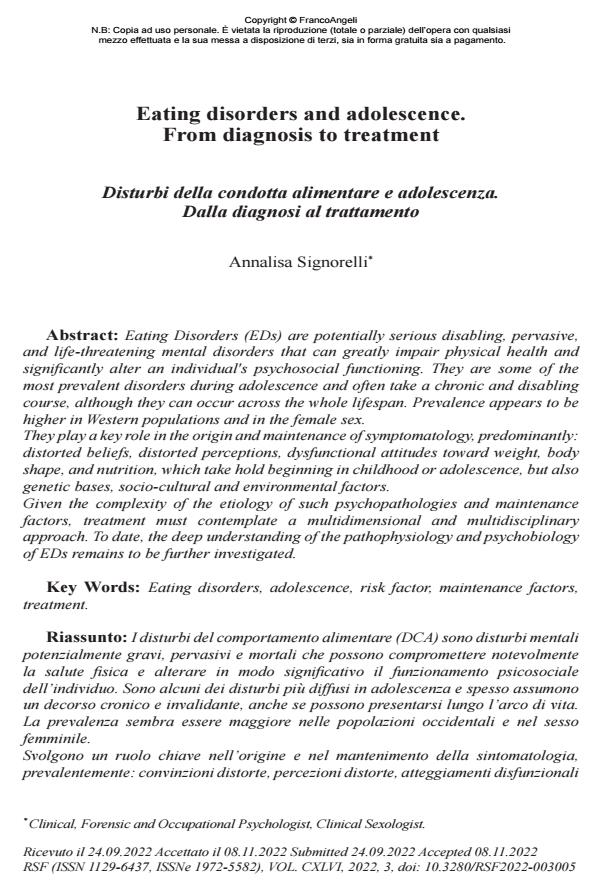Disturbi della condotta alimentare e adolescenza. Dalla diagnosi al trattamento
Journal title RIVISTA SPERIMENTALE DI FRENIATRIA
Author/s Annalisa Signorelli
Publishing Year 2022 Issue 2022/3
Language English Pages 23 P. 81-103 File size 226 KB
DOI 10.3280/RSF2022-003005
DOI is like a bar code for intellectual property: to have more infomation
click here
Below, you can see the article first page
If you want to buy this article in PDF format, you can do it, following the instructions to buy download credits

FrancoAngeli is member of Publishers International Linking Association, Inc (PILA), a not-for-profit association which run the CrossRef service enabling links to and from online scholarly content.
Eating Disorders (EDs) are potentially serious disabling, pervasive, and life-threatening mental disorders that can greatly impair physical health and significantly alter an individual's psychosocial functioning. They are some of the most prevalent disorders during adolescence and often take a chronic and disabling course, although they can occur across the whole lifespan. Prevalence appears to be higher in Western populations and in the female sex. They play a key role in the origin and maintenance of symptomatology, predominantly: distorted beliefs, distorted perceptions, dysfunctional attitudes toward weight, body shape, and nutrition, which take hold beginning in childhood or adolescence, but also genetic bases, socio-cultural and environmental factors. Given the complexity of the etiology of such psychopathologies and maintenance factors, treatment must contemplate a multidimensional and multidisciplinary approach. To date, the deep understanding of the pathophysiology and psychobiology of EDs remains to be further investigated.
Keywords: Eating disorders, adolescence, risk factor, maintenance factors, treatment.
Annalisa Signorelli, Eating disorders and adolescence. From diagnosis to treatment in "RIVISTA SPERIMENTALE DI FRENIATRIA" 3/2022, pp 81-103, DOI: 10.3280/RSF2022-003005